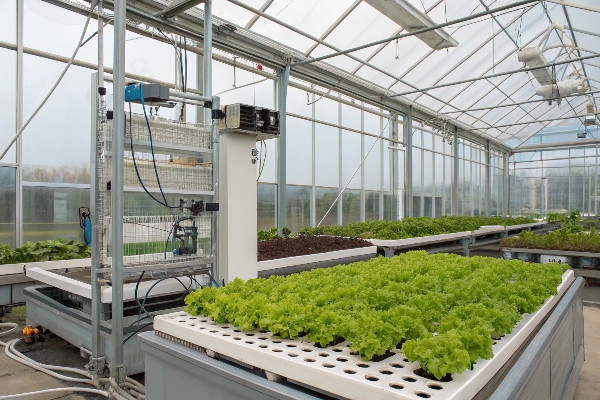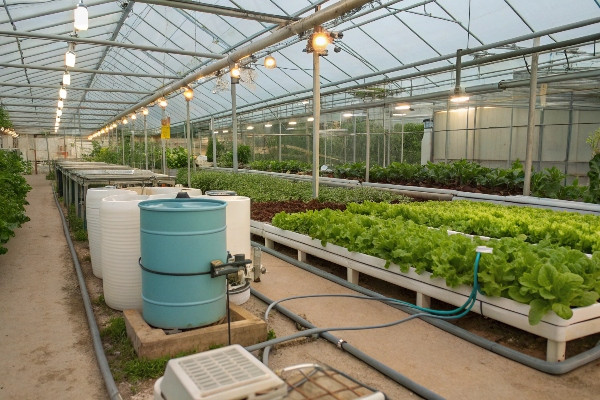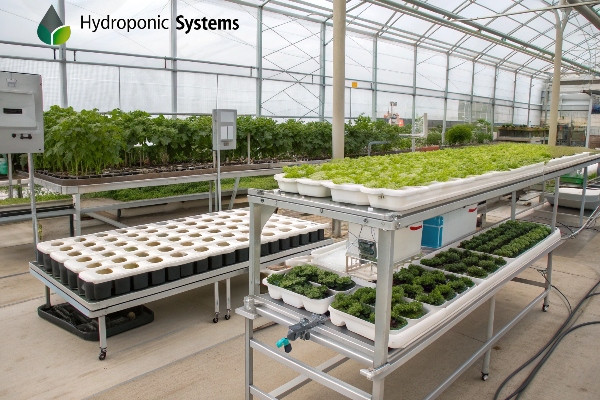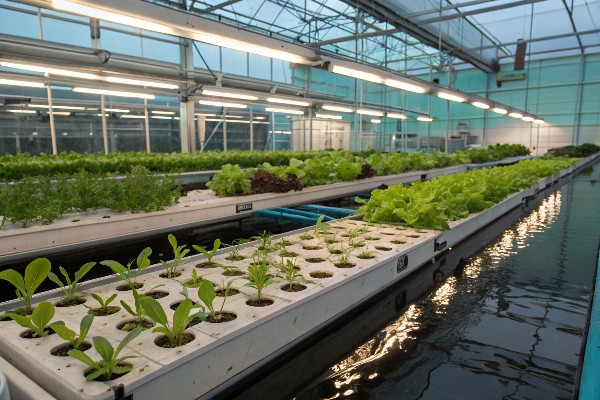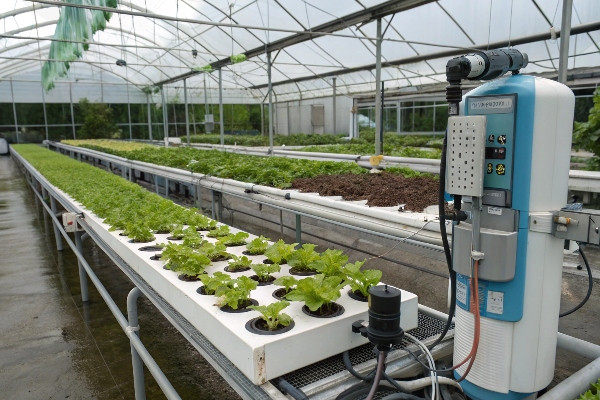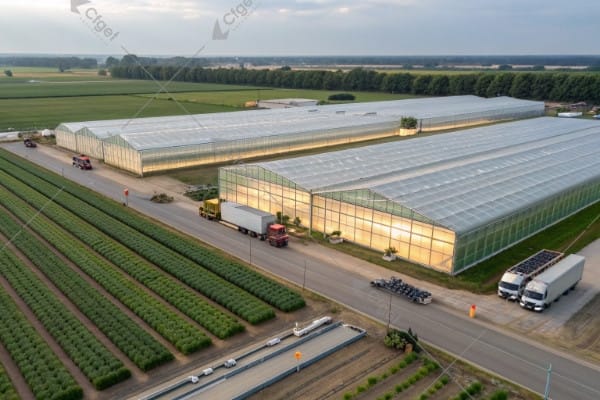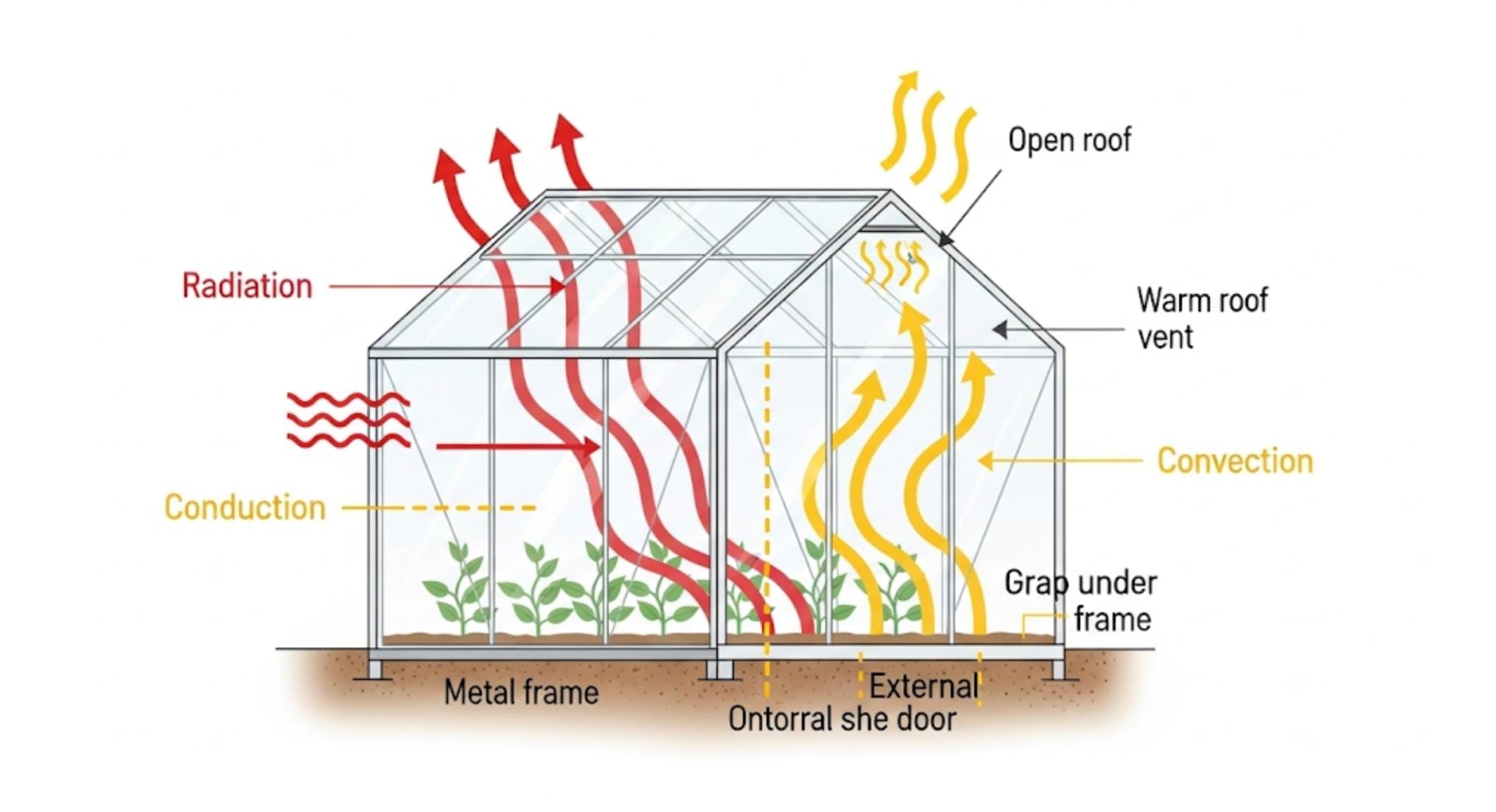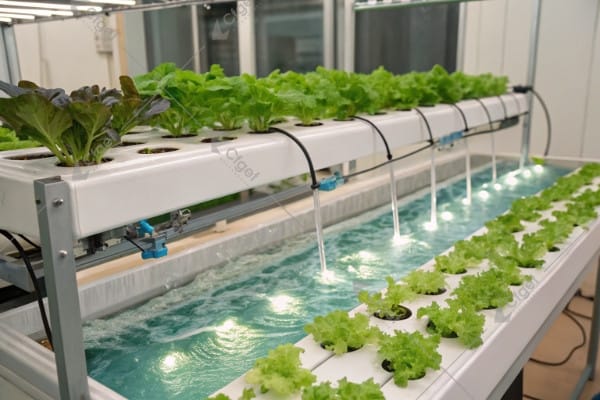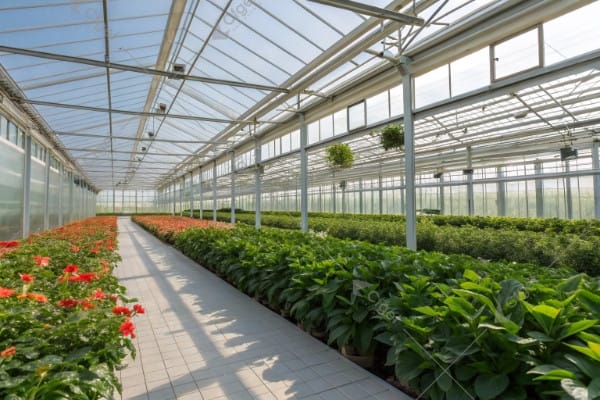Are you struggling with low crop yields and inconsistent harvests in your greenhouse? Many growers face these frustrating challenges, wasting valuable resources and time. Hydroponics integration might be your solution.
Integrating hydroponic systems into greenhouses creates a powerful synergy that maximizes production efficiency. This controlled environment agriculture approach combines the climate protection of greenhouses with the precision nutrition of hydroponics, resulting in faster growth cycles, higher yields, and more consistent crop quality.
I remember visiting a traditional soil-based greenhouse in Thailand where the owner complained about soil-borne diseases affecting his tomato crops year after year. After helping him transition to a basic hydroponic system, his production increased by 35% while using 60% less water. This transformation isn’t unique – I’ve seen similar results across numerous operations where combining these two technologies creates something greater than the sum of their parts.
Don’t Miss:——Winter Greenhouse Heating Strategies: Keeping Your Plants Warm Efficiently?
You might like:——Everything You MUST Know Before Buying a Polycarbonate Greenhouse
Why Are Greenhouses and Hydroponics Considered a Perfect Match?
Do you find your growing season limited by weather, or struggle with pests destroying your carefully tended crops? These common growing challenges can destroy profits and limit your farming potential. A greenhouse-hydroponic combination addresses these core issues.
Greenhouses and hydroponics create an ideal partnership because they solve complementary problems. Greenhouses provide climate protection and extended growing seasons, while hydroponics offers precise nutrient delivery, water efficiency, and elimination of soil-borne diseases. Together, they create a highly controlled growing environment.
When I first started working with greenhouse systems at CFGET, I noticed many clients were treating their greenhouses as simply "weather protection" rather than integrated growing systems. My experience shows this is a missed opportunity. The synergy between these technologies creates numerous advantages that neither can fully achieve alone.
Key Benefits of Combining Greenhouses with Hydroponics
The integration of hydroponics within greenhouse environments creates several significant advantages:
Climate Protection with Precision Control
Greenhouses already provide basic climate protection, but when paired with hydroponics, growers gain unprecedented control over the entire growing environment. In my work with clients in Central Asia, we frequently design systems that can maintain optimal growing conditions despite outside temperatures ranging from -20°C to +40°C.
The greenhouse structure protects crops from extreme weather, while hydroponic systems allow precise management of root zone conditions. This combination enables year-round growing regardless of external conditions. For example, a cucumber producer in Kazakhstan was able to extend his growing season from 5 months to nearly 12 months by implementing our combined greenhouse-hydroponic system.
Water Conservation Benefits
Water conservation is increasingly critical for sustainable agriculture. Traditional soil-based greenhouse growing can be relatively efficient, but hydroponics takes water conservation to another level. In my experience designing systems for drought-prone regions in Southeast Asia, our hydroponic greenhouse installations typically reduce water usage by 70-90% compared to conventional farming methods.
This efficiency comes from recirculating water systems that minimize evaporation and targeted delivery directly to plant roots. One lettuce farm in Malaysia reduced their water consumption from 250 liters per kg of produce to just 20 liters after converting to a hydroponic greenhouse system.
Disease Management Advantages
Soil-borne diseases often plague conventional greenhouse operations. I’ve consulted with numerous growers who faced devastating crop losses from fusarium wilt, pythium, and other pathogens that persist in greenhouse soil.
Hydroponics eliminates this threat by removing soil entirely from the equation. Additionally, most hydroponic systems allow for complete sterilization between crop cycles, drastically reducing disease pressure. One tomato producer in Vietnam who previously lost up to 30% of crops to soil-borne diseases has maintained less than 2% crop loss since implementing a hydroponic greenhouse five years ago.
Space Efficiency and Yield Improvement
The combination of controlled climate and optimized nutrition creates dramatic yield improvements. Hydroponic greenhouse systems typically produce 3-10 times more crop per square meter than conventional field farming. This efficiency comes from both faster growth cycles and the ability to grow vertically.
A strawberry grower in Thailand who implemented our vertical hydroponic system within their existing greenhouse structure increased production from 5kg/m² to 22kg/m² annually. This transformation required minimal additional greenhouse space while dramatically increasing output.
How Do You Choose the Right Hydroponic Setup for Your Greenhouse Scale?
Are you overwhelmed by the many hydroponic options available, unsure which will work best with your existing greenhouse? This common confusion leads many growers to make costly system choices that don’t match their specific needs. Finding the right match is essential.
The ideal hydroponic system for your greenhouse depends primarily on your operation’s scale, crop types, and resources. Small operations benefit from simple media-based or DWC systems, medium-scale greenhouses thrive with NFT or Dutch bucket setups, while large commercial operations require sophisticated automated systems with comprehensive environmental controls.
The question of system selection comes up in nearly every consultation I conduct. What works brilliantly for a 10-hectare tomato operation would be disastrous for a small 500m² mixed greens greenhouse. Having designed systems across multiple scales, I’ve found that right-sizing is the key to success.
Matching Hydroponic Systems to Greenhouse Scale
Finding the perfect match between hydroponic system and greenhouse size is critical for operational success and profitability. Through my 28 years of experience at CFGET, I’ve helped operations of all sizes implement appropriate systems.
Small-Scale Greenhouse Solutions (Under 500m²)
For smaller greenhouse operations, simplicity and manageable startup costs are usually the priority. I typically recommend one of three systems for these clients:
Media-based systems – These use inert growing media like coco coir, perlite, or rockwool. They’re forgiving of power outages and require minimal technical expertise. A small herb grower in Poland I worked with started with just 200m² and a simple drip irrigation system into coco coir bags. This allowed him to learn hydroponics without risking total crop failure from system malfunctions.
Deep Water Culture (DWC) – For leafy greens in smaller operations, DWC provides excellent results with moderate technical requirements. The plants float on rafts with their roots immersed in nutrient solution. A university research greenhouse in Thailand implemented our small-scale DWC system with excellent results for leafy green research.
Simple Nutrient Film Technique (NFT) – While requiring more attention than media-based systems, small NFT setups can be highly productive for leafy greens and herbs in smaller greenhouses. A 300m² urban greenhouse in Singapore successfully uses a modular NFT system for high-value microgreens and specialty lettuce.
The key factor with small operations is keeping the technical complexity manageable. I always remind these clients that it’s better to have a simple system running optimally than an advanced system running poorly.
Medium-Scale Greenhouse Solutions (500m² – 5000m²)
Medium-scale greenhouse operations benefit from somewhat more sophisticated systems that balance automation with manageable capital costs:
Commercial NFT systems – These work exceptionally well for leafy greens, herbs, and small fruiting crops. They efficiently use greenhouse space and can be expanded modularly. A 2500m² lettuce producer in Vietnam increased production by 400% after transitioning from soil to our commercial NFT system.
Dutch bucket systems – Excellent for tomatoes, cucumbers, peppers, and other vining crops. These systems are relatively simple yet highly effective. A 1200m² pepper greenhouse in Malaysia converted to Dutch buckets and reported a 65% yield increase compared to their previous soil operation.
Flood and drain (ebb and flow) – These systems periodically flood growing beds with nutrient solution, then drain it back to a reservoir. They work well for a variety of crops and are somewhat forgiving of power interruptions. A 3000m² mixed crop greenhouse in the Philippines uses this system successfully.
Medium-scale operations need to balance automation with reasonable capital investment. I recommend systems that have some redundancy built in but don’t require 24/7 technical support.
Large Commercial Greenhouse Operations (Over 5000m²)
For large commercial operations, sophisticated systems with high levels of automation and monitoring become economically viable:
Recirculating Deep Water Culture (RDWC) – Large-scale leafy green producers benefit from the efficient use of water and nutrients while maintaining high production rates. A 15,000m² lettuce operation in Saudi Arabia produces over 3,500 kg of leafy greens daily using our advanced RDWC system.
Centralized Irrigation and Dosing – Large operations benefit from centralized nutrient management systems that automatically mix and distribute precisely controlled nutrient solutions. These systems save labor and improve consistency. A 12-hectare tomato greenhouse complex in Kazakhstan uses our centralized irrigation system to manage over 30 different growing zones with just two technicians.
Automated Environmental Control Integration – At large scales, integrating hydroponic controls with climate management becomes essential. These systems monitor and adjust EC, pH, temperature, humidity, CO₂, and irrigation automatically. A 10-hectare pepper operation in Mexico uses our fully integrated control system to optimize growing conditions continuously.
Large operations justify higher capital investments in automation and monitoring because labor savings and production consistency quickly recover these costs. However, they also require trained technical staff capable of managing and maintaining complex systems.
What Essential Equipment Ensures Greenhouse Hydroponics Success?
Do you worry about investing in expensive equipment that might not deliver results? Many greenhouse operators waste thousands on unnecessary gadgets while missing crucial components. Understanding the truly essential equipment will save you money and headaches.
Successful greenhouse hydroponic systems require six essential equipment categories: reliable growing structures, precision irrigation components, accurate environmental monitoring systems, appropriate lighting solutions, efficient climate control equipment, and dependable backup systems. The specific requirements within each category vary based on your climate and crops.
Through decades of designing and installing systems across various climates, I’ve developed a clear understanding of what equipment truly matters. When I visit struggling operations, I often find they’ve invested heavily in unnecessary technology while neglecting fundamentals. Let me share what I’ve found to be truly essential.
Critical Equipment Components for Hydroponics in Greenhouses
Having designed greenhouse systems across more than 20 countries, I’ve identified the equipment that consistently determines success or failure. While specific needs vary by location and crop, certain core components prove essential in nearly every operation.
Growing System Foundations
The physical structures that support plants and deliver nutrients form the backbone of any hydroponic greenhouse:
Growing Channels/Containers – These must be durable, food-safe, and appropriate for your chosen hydroponic method. After seeing numerous failures with cheap materials, I strongly recommend UV-stabilized food-grade plastics or stainless steel. A strawberry grower in France initially tried to save money with standard PVC pipes for an NFT system, but experienced crop losses when the pipes degraded and leaked chemicals. After switching to proper UV-stabilized NFT channels, their crops thrived.
Support Structures – These must safely support the weight of fully mature plants, growing media, and nutrient solution. I recommend galvanized steel or aluminum structures that won’t corrode in the humid greenhouse environment. A tomato grower in Indonesia initially used wooden supports that began rotting after just one season in the humid conditions, leading to a catastrophic system collapse.
Root Zone Materials – Depending on your system, you’ll need appropriate growing media like rockwool, coco coir, expanded clay pellets, or perlite. The choice significantly impacts water retention and aeration. I’ve found that coco coir works exceptionally well in humid Southeast Asian environments, while rockwool tends to perform better in drier European conditions.
Irrigation Distribution – Drippers, sprayers, or channels must distribute water evenly to all plants. Uneven distribution is a common cause of crop variability. After helping a 1.5-hectare greenhouse troubleshoot poor growth patterns, we discovered pressure variations in their irrigation lines. Installing pressure-compensating drippers resulted in remarkably more uniform crops.
Water Management Systems
Water quality and delivery are crucial for hydroponic success:
Water Pumps – These must be reliable, energy-efficient, and appropriately sized. I always recommend installing redundant pumps with automatic failover for critical systems. A lettuce producer in Vietnam lost an entire crop during a three-hour power outage when their single pump failed with no backup.
Filtration Systems – These prevent clogging of irrigation components and remove potential pathogens. The filtration requirements depend on your water source quality. For operations using pond or river water, I specify multi-stage filtration including sand, carbon, and final micron filtration.
Nutrient Dosing Equipment – Automatic dosing systems maintain precise nutrient levels and pH. For operations over 1000m², these systems typically pay for themselves within months through labor savings and improved crop consistency. A cucumber grower in Kazakhstan reported 22% yield increases after switching from manual to automatic nutrient management.
Water Storage – Adequate buffer tanks ensure system stability. I typically recommend storage capacity for at least 24 hours of operation to provide resilience against water supply interruptions. A pepper grower in water-scarce Jordan installed our recommended 100,000-liter storage system, which saved their operation during a two-day municipal water outage.
Monitoring and Control Technology
Successful operations require continuous awareness of conditions:
EC and pH Monitors – Continuous monitoring of electrical conductivity and pH is essential for nutrient management. These should be calibrated regularly for accuracy. After installing continuous monitoring in a struggling tomato operation in Vietnam, we discovered daily pH fluctuations that were severely impacting nutrient availability.
Environmental Sensors – Temperature, humidity, light levels, and CO₂ concentration directly impact plant performance. Strategic sensor placement throughout the greenhouse provides critical data for management decisions. A large-scale lettuce grower in Saudi Arabia uses our sensor network to identify and correct microclimates within their greenhouse that were causing inconsistent growth.
Automated Controllers – These systems integrate sensor data to automatically adjust equipment operation. For operations over 2000m², the labor savings and improved consistency typically justify the investment in automation. A 4-hectare tomato greenhouse in Kazakhstan reduced labor costs by 35% while improving yield by 18% after implementing our integrated control system.
Data Logging and Analysis – Recording environmental and system data enables continuous improvement. After analyzing six months of environmental data for a strawberry grower in Thailand, we identified temperature patterns that were triggering flowering delays, allowing for targeted climate control adjustments.
How Do You Manage Nutrients and Environment in a Hydroponic Greenhouse?
Are you confused by conflicting advice about nutrient formulations and environmental parameters? Many growers waste money on unnecessary additives or struggle with environmental imbalances that stunt plant growth. Finding the right balance is both science and art.
Effective hydroponic greenhouse management requires balancing nutrient solution composition with environmental factors. Success depends on maintaining appropriate EC and pH levels, adjusting nutrient formulations for growth stages, controlling temperature and humidity precisely, and implementing effective monitoring routines to catch issues early.
Managing a hydroponic greenhouse is like conducting an orchestra – all elements must work in harmony. Through years of troubleshooting systems across diverse climates, I’ve developed systematic approaches that consistently produce results. The most successful operations maintain this delicate balance through careful monitoring and timely adjustments.
Balancing Nutrients and Environment for Optimal Growth
Through my experience designing greenhouse systems across different climates, I’ve found that successful hydroponic management requires a holistic approach that balances nutrient delivery with environmental control. These systems interact constantly, and understanding these relationships is critical.
Nutrient Solution Management1
The foundation of hydroponic success lies in proper nutrient solution management:
Base Nutrient Formulations – Different crops and growth stages require specific nutrient ratios. I’ve found that while many commercial formulations work well, they often need adjustment for local water conditions. When helping a tomato grower in hard-water regions of Central Asia, we modified standard formulations to account for the high calcium levels in their source water, preventing the blossom end rot issues they had previously experienced.
EC Management Strategies – Electrical conductivity (EC) indicates nutrient concentration and must be adjusted based on crop type, growth stage, and environmental conditions. During high temperature periods, I recommend reducing EC by 10-20% to prevent salt stress. A cucumber grower in Thailand who maintained fixed EC levels was experiencing afternoon wilting until we implemented dynamic EC management that reduced concentration during peak heat hours.
pH Stabilization Techniques – Maintaining proper pH ensures nutrient availability. Most crops perform best between 5.5-6.5, but stabilizing pH can be challenging. I recommend using appropriate buffering agents and making small, frequent adjustments rather than large corrections. A lettuce operation in Vietnam was experiencing inconsistent growth until we discovered wild pH swings from overly aggressive correction. Implementing automated micro-dosing stabilized their system.
Water Quality Considerations – Source water quality dramatically impacts nutrient management. High sodium or bicarbonate levels require specific treatment strategies. For a greenhouse operation in coastal Malaysia dealing with sodium-contaminated water, we implemented a reverse osmosis system with subsequent remineralization to create ideal water conditions for their sensitive berry crops.
Environmental Control Factors
The greenhouse environment directly affects nutrient uptake and plant health:
Temperature Management – Different crops have specific temperature requirements for optimal growth and nutrient uptake. I’ve observed that maintaining appropriate night-day temperature differentials (typically 5-7°C) improves plant development for most fruiting crops. A tomato greenhouse in northern China struggled with poor fruit set until we implemented precise temperature differential control.
Humidity Regulation – Humidity directly impacts transpiration, which drives nutrient uptake. Maintaining 60-80% relative humidity works well for most crops, but precise requirements vary. For a pepper grower in extremely dry conditions in Kazakhstan, we installed high-pressure fogging systems that increased yields by 40% by maintaining appropriate humidity levels.
Light Management – Light intensity and duration affect photosynthesis rates and, consequently, nutrient requirements. In northern European installations, I typically recommend supplemental lighting systems that maintain a minimum Daily Light Integral (DLI) to ensure consistent production year-round. A lettuce grower in Finland extended their productive season by over 4 months after implementing our lighting recommendations.
CO₂ Enrichment – Carbon dioxide levels directly impact photosynthesis efficiency. In sealed greenhouse environments, I recommend maintaining 800-1000ppm CO₂ during daylight hours for most crops. A cucumber producer in a semi-closed greenhouse in Saudi Arabia increased yields by 25% after implementing CO₂ enrichment, despite the added operational cost.
Integration and Monitoring Systems
Success requires integrating nutrient and environmental management:
Continuous Monitoring Protocols2 – Regular testing and observation identifies issues before they impact crops. I recommend automated monitoring systems for operations over 1000m², with alerts for out-of-range conditions. A large strawberry operation in Mexico avoided a total crop loss when their monitoring system detected an irrigation pump failure at 2:00 AM, triggering an automatic backup system.
Data-Driven Adjustments – Collecting and analyzing system data enables continuous improvement. After helping a tomato grower implement comprehensive data collection, we identified specific environmental conditions that consistently preceded their highest quality harvests, allowing them to replicate these conditions intentionally.
Seasonal Adaptation Strategies – Nutrient requirements and environmental controls must adapt to seasonal changes. I develop season-specific protocols for clients in variable climates. A pepper grower in Turkey who previously used the same nutrient formulation year-round saw a 30% production increase after implementing our seasonal adjustment protocols.
Crop-Specific Optimization – Different crops require tailored approaches. What works for leafy greens often fails for fruiting crops. A diversified greenhouse operation in Spain struggled until we helped them implement crop-specific zones with dedicated nutrient and climate management for each crop type.
Conclusion
Integrating hydroponics with greenhouse technology creates powerful synergy that maximizes production efficiency while conserving resources. By selecting appropriate systems for your scale, investing in essential equipment, and mastering environmental management, you can achieve remarkable results regardless of your climate challenges.

